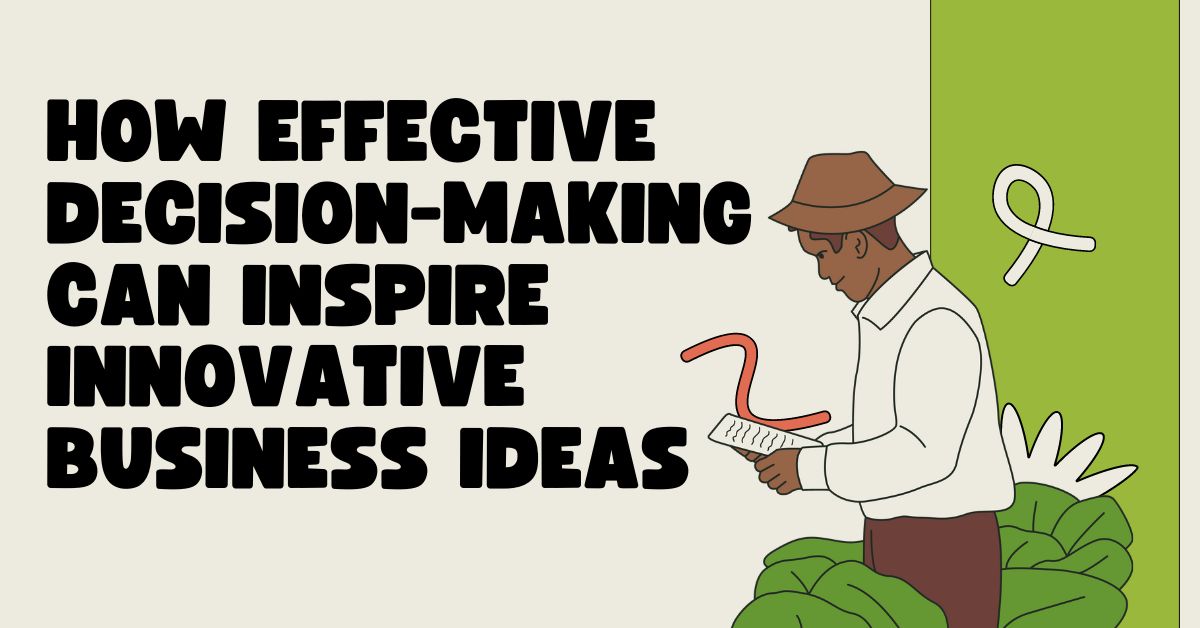How Effective Decision-Making Can Inspire Innovative Business Ideas
In today’s fast-paced business landscape, the ability to make effective decisions is crucial for success. But beyond just solving immediate problems, effective decision-making can also be a powerful catalyst for innovation. Here’s how the two are interconnected and how you can leverage this relationship to inspire innovative business ideas.
1. Embrace a Data-Driven Approach
Effective decision-making starts with gathering and analyzing relevant data. When you use data to inform your choices, you’re more likely to uncover trends, customer needs, and market gaps. This insight can spark innovative ideas. For instance, a retail company might analyze purchasing patterns to identify a growing interest in sustainable products, leading to the development of a new eco-friendly product line.
2. Foster a Culture of Collaboration
Decision-making shouldn’t be a solitary endeavor. Involving a diverse team in the decision-making process can bring multiple perspectives to the table. When team members feel empowered to share their thoughts, they may propose unconventional ideas that could lead to innovation. Encourage brainstorming sessions where all voices are heard—this collaborative environment can generate creative solutions and inspire new business concepts.
3. Encourage Risk-Taking
Effective decision-making often involves assessing risks and rewards. By fostering a culture that embraces calculated risk-taking, you can inspire your team to think outside the box. When employees feel safe to experiment and propose bold ideas without the fear of failure, they are more likely to come up with innovative solutions. Celebrate both successes and failures, as each offers valuable learning opportunities.
4. Utilize Scenario Planning
Scenario planning allows businesses to explore various future possibilities and develop strategies accordingly. This proactive approach not only aids in decision-making but also encourages innovative thinking. By imagining different scenarios—such as shifts in consumer behavior or technological advancements—teams can identify potential opportunities and challenges, leading to the creation of innovative products or services tailored to future needs.
5. Learn from the Past
Effective decision-making involves reflecting on past experiences. Analyzing what worked and what didn’t can provide valuable lessons. By studying successful innovations and even failures, businesses can refine their strategies and approach to future decision-making. This iterative learning process often leads to fresh ideas and innovative solutions.
6. Stay Customer-Centric
Keeping the customer at the center of decision-making can spark innovation. Gather feedback through surveys, focus groups, or direct interactions to understand customer pain points and desires. When decisions are informed by customer insights, you’re more likely to identify gaps in the market and develop solutions that resonate with your audience. This customer-centric approach can lead to groundbreaking products or services.
7. Leverage Technology
Incorporating technology into decision-making can enhance efficiency and creativity. Tools like artificial intelligence and analytics platforms can provide deeper insights and identify patterns that may not be immediately apparent. By automating routine decisions, your team can focus more on strategic thinking and innovative idea generation.
Conclusion
Effective decision-making is not just about making the right choices; it’s also about fostering an environment that nurtures creativity and innovation. By embracing data, encouraging collaboration, and maintaining a customer-centric focus, businesses can inspire innovative ideas that drive growth and success. Remember, every decision has the potential to spark a new idea—so approach each one with an open mind and a willingness to innovate.
